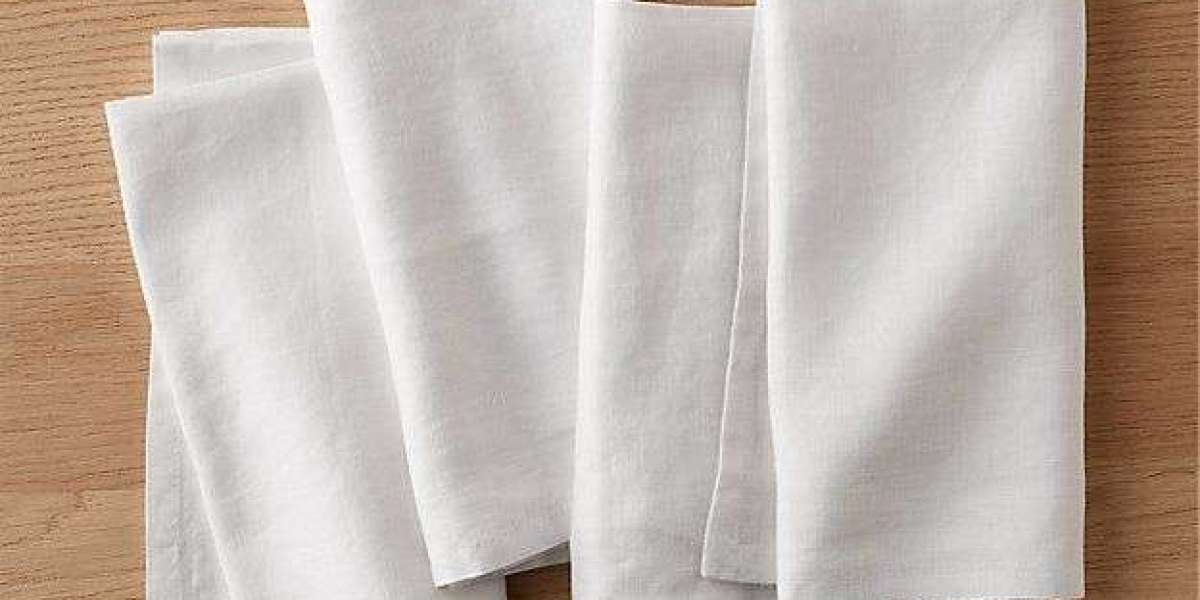In the world of textiles, few materials boast the legacy, charm, and versatility of linen. Woven from the fibers of the flax plant, linen has been celebrated for centuries for its durability, beauty, and ecological sustainability. Among its most elegant expressions is the humble napkin. Linen flax napkins combine functionality with finesse, adding a sophisticated touch to any dining experience. Whether used in everyday meals or formal gatherings, these napkins transform a simple table setting into a luxurious affair.
The Origins and Craftsmanship Behind Flax Linen
Linen has a rich heritage that dates back thousands of years, with its roots firmly planted in ancient Egypt and Mesopotamia. Flax, the plant from which linen is derived, thrives in cooler climates such as those found in parts of Europe, especially Belgium and France. Harvesting flax is a labor-intensive process that requires great care and patience. The long, silky fibers are extracted from the plant through retting, drying, and scutching, then spun into yarn and woven into linen fabric.
The craftsmanship of flax linen is unmatched. Unlike cotton, linen fibers are longer and stronger, resulting in a fabric that is both breathable and enduring. This craftsmanship is especially evident in linen napkins, which hold their shape and elegance over time, even after frequent laundering.
Why Linen Flax Napkins are a Cut Above the Rest
Linen flax napkins stand out in a sea of synthetic and cotton alternatives. They possess a natural luster and texture that elevate any table. The crisp feel of linen, combined with its ability to soften with each wash, creates a product that improves with age. Their hypoallergenic properties and moisture-wicking abilities make them ideal for daily use, particularly in homes where health and hygiene are a priority.
Furthermore, the weight and weave of linen napkins contribute to their practicality. They are absorbent yet quick-drying, making them perfect for wiping hands or dabbing lips without leaving behind lint or moisture.
Sustainable Beauty: Eco-Friendly Appeal of Flax Linen
In an era where sustainability is more important than ever, flax linen napkins represent a conscious and responsible choice. Flax requires far less water to grow compared to cotton and typically thrives without the need for pesticides or fertilizers. Every part of the flax plant is used in production, making it a zero-waste crop.
Additionally, linen is biodegradable and recyclable. Choosing linen napkins over disposable paper options significantly reduces household waste and supports long-term environmental health. By incorporating flax linen into your lifestyle, you not only indulge in elegance but also participate in a meaningful shift toward sustainable living.
Linen Napkins in Everyday Dining
One of the greatest joys of owning linen flax napkins is incorporating them into daily routines. Far from being reserved solely for holidays and dinner parties, linen napkins are practical for regular use. Their softness and durability make them comfortable to use at breakfast, lunch, and dinner, enhancing even the most casual meals.
Pairing them with rustic ceramics, vintage cutlery, or minimalist tableware creates a cozy yet chic atmosphere. They can be folded simply or tied with twine for a farmhouse touch, offering endless styling possibilities. Their natural hues—such as ivory, stone, or muted pastels—blend seamlessly into various interior themes.
The Role of Linen Napkins in Formal Events
For weddings, banquets, and upscale dining experiences, linen napkins are the gold standard. Their weight and drape allow them to be styled in intricate folds or elegant fan shapes. Event designers often use colored or embroidered linen napkins to complement the table décor and floral arrangements. Monogrammed linen napkins add a personalized flair that resonates with guests, creating memorable impressions.
From minimalist Scandinavian aesthetics to opulent European tablescapes, linen napkins adapt effortlessly. Their understated elegance makes them the perfect canvas for creative expression.
Care and Longevity: Preserving the Luxury of Linen
While linen is a robust and enduring fabric, proper care ensures it retains its beauty and texture over time. Washing linen napkins in cold or lukewarm water with mild detergent helps maintain their structure. Avoiding bleach and over-drying is crucial, as it can weaken the fibers.
Line drying is ideal for preserving the natural integrity of the fabric, but if tumble drying is necessary, using a low heat setting is recommended. Ironing while slightly damp gives linen that crisp, polished finish, though many prefer the relaxed, wrinkled charm that linen naturally embodies.
Storing linen napkins properly also contributes to their longevity. Folding them neatly and keeping them in a dry, well-ventilated space prevents mildew and yellowing.
Linen Napkins as Heirloom Pieces
Unlike disposable or low-quality napkins, linen flax napkins are built to last. Their timeless design and sturdy nature make them perfect candidates for heirloom status. Families often pass down sets of linen napkins from one generation to another, each thread woven with stories and shared meals.
The notion of using the same napkins your grandparents once did, or setting your holiday table with linen passed down through the years, adds depth and sentiment to each gathering. They become more than just accessories—they become treasured pieces of family history.
Linen and Artistry: Embroidery and Handcrafted Details
Linen’s fine weave and natural strength make it an ideal canvas for embellishments. Artisans often add delicate embroidery, lace trims, or hemstitching to linen napkins, enhancing their visual appeal. These handcrafted elements speak to a tradition of textile artistry that has endured through centuries.
Custom embroidered napkins are especially popular for wedding tables, anniversaries, or luxury hospitality venues. They combine form and function in a way that machine-made alternatives rarely match.
Choosing the Right Linen Napkins for Your Home
Selecting the perfect set of linen flax napkins involves more than just color coordination. Consider your dining habits, home aesthetic, and lifestyle. For everyday use, opt for machine-washable linen with minimal detailing. For special occasions, choose napkins with ornate stitching or a finer weave.
Colors also play a pivotal role. Neutral tones such as oat, sand, or white offer versatility, while bold colors like navy, olive, or burgundy can make a statement. Some homeowners prefer seasonal linen napkins—light tones for spring and summer, and richer hues for autumn and winter gatherings.
The size of the napkin is another consideration. While the standard dinner napkin size is approximately 20”x20”, smaller cocktail or luncheon napkins are available for more casual settings.
A Global Appreciation: Linen Napkins Around the World
Linen napkins enjoy international popularity, from the bistros of Paris to minimalist homes in Japan. Each culture has interpreted their use differently, incorporating them into dining rituals with unique flair.
In Mediterranean cultures, linen napkins often accompany long, leisurely meals. Scandinavian countries, known for their love of natural materials, embrace linen’s understated elegance. Meanwhile, in countries with rich textile traditions like India, linen napkins are sometimes adorned with regional embroidery styles, adding cultural depth to their design.
This global embrace of linen is a testament to its universal appeal—beautiful, practical, and refined.
Innovative Trends in Modern Linen Napkin Design
Today’s designers are reimagining linen napkins for the modern home. There’s a growing trend toward pre-washed, stonewashed linen, which offers a softer, more lived-in feel right out of the box. Digital printing techniques have made it possible to create artistic patterns, geometric designs, or custom logos directly on linen fabric.
Eco-conscious consumers are also driving demand for organically grown flax and low-impact dye processes. These advancements marry tradition with innovation, ensuring linen napkins remain relevant in contemporary households.
Conclusion: The Everlasting Appeal of Linen Flax Napkins
Linen flax napkins are more than just dining accessories—they are timeless investments in beauty, sustainability, and tradition. Whether used for a cozy breakfast at home or a grand celebration, they bring an irreplaceable sense of elegance and authenticity to every meal.
Their connection to nature, historical roots, and handcrafted excellence make them unmatched in charm and functionality. As we continue to seek meaningful, lasting choices for our homes, linen flax napkins stand out as quiet symbols of taste, care, and conscious living. In every soft fold lies a story—of craftsmanship, heritage, and refined simplicity.



